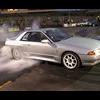Is My Catch Can Install Correct?
Announcements
-
Similar Content
-
Latest Posts
-
You don’t need to use full throttle all the time to break these blocks, 500kw at the wheels in more then enough to break them even with an occasional squirt. Hell I’ve seen them break under 400kw
-
By Dose Pipe Sutututu · Posted
A work around is to install the R35 card style AFM/MAF on the cold side of the intercooler piping and the BOV on the hot side piping. Works well, also you can combat the revs dropping by adding a bit more ignition timing on the idle ignition timing table to slow the rate of RPM drop. -
Understood. If you dont have a ridiculous limit, Tune, T's and P's are in check, and arent bashing it all the time and doing the due deligence for maintenance(inc oil analysis) then its pretty safe. 100% agree, let your right food control it to some extent.
-
So these external kits with the machined block for remote solenoid mount will only work on a NEO head and RB30 or RB26 bottom end For an R33 head on a 26 bottom end the remote vct kit is to resolve RB26 manifold adaptor plates etc IF you try to use the remote VCT on an RB30 or RB26 bottom end with an R33 head then you can starve the cam journal??? I have one of these kits from bits I had years ago before plans changed I don't understand how that tracks with this video https://youtu.be/RuPiI22Mplk?feature=shared This looks like I can run the v termite vct kit to feed the VCT on an R33 head on an RB26 bottom end?!?!? Lol.... don't v have these problems on RB20s
-
Yeah i know that MAF is no no for this type of BoV. The engine has no BoV and "hose/pipes" ..it was all deleted (or probably it was not even on the engine when it was bought ) It does that "sutututu" noise which i kinda do not want(atmospheric is better IMO...but standalone ECU) What are the cons of running without blow off on stock RB25DET NEO. It running 5-7 PSI max (it has boost controller) EDIT: and can Nistune be "tuned" to know there is no BoV to i dont know "know" and be better for a car? I read so many info about no BoV. One guy saying it is bad and hurting the turbo/engine/car and other that it does not...
-







Recommended Posts
Create an account or sign in to comment
You need to be a member in order to leave a comment
Create an account
Sign up for a new account in our community. It's easy!
Register a new accountSign in
Already have an account? Sign in here.
Sign In Now